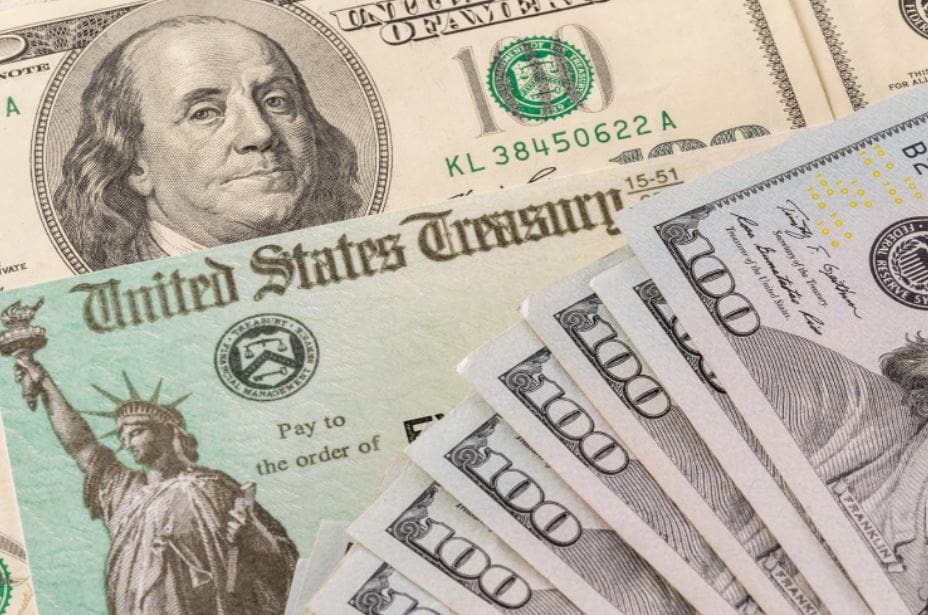The high inflation rate has forced state governments to take measures, such as stimulus checks, to protect their residents. With no support imminent from the federal administration thanks to Republican intransigence, the states are relying on American Rescue Plan Act (ARPA) funds to provide inflation relief payments to residents.
One of the biggest state-backed payments is due in October as California gears up to deliver an inflation relief package worth $17 billion to around 23 million eligible residents of the Golden State. The payments could total up to $1,050 for a married couple filing their income tax jointly and with at least one dependent.
The California relief package will be paid for by a record $97 billion budget surplus, one of the few states to depend on state funds to provide relief to its residents. Governor Gavin Newsom said that this will put money in the pockets of residents and help them pay for their gas, which is the maximum in America, and put food on the table.
The relief has been touted as a middle-class rebate with even families with joint income of up to $500,000 benefitting from the stimulus check.
The 2022-23 California state budget was signed by Governor Newsom in June and includes direct checks ranging from $200 to $1,050 benefitting around 60% of Californians. Payments will begin on October 7, 2022, as confirmed by the tax board of the state, the Franchise Tax Board (FTB). California incorporated an info page detailing the Middle-Class Tax Refund, including a calculation that estimates the amount you will receive.
Details Of The California Stimulus Check
The FTB will issue the stimulus payments either through debit cards or direct deposits. No paper checks will be dispensed in this round. Residents who received the earlier stimulus checks by direct account transfer will also receive the third round in the same method between the 7th and 25th of October.

If you have filed your state income tax returns for 2020 electronically and received the refund through the direct method, you will get a direct credit transfer between October 28 and November 14.
The remaining payments will come in through debit cards, with the administration not issuing any paper checks. If the earlier rounds of the state stimulus checks came in by a debit card, the same mode will be used for the tax refund. The cards are expected to be sent between October 25 and December 10. Other payments through debit cards are to be sent by January 15, 2023.
The FTB has revealed that they expect to send out 90% of all payments by October. The board will soon release, expectedly by the first week of October, a detailed schedule of the payment for beneficiaries who will get their payments through debit cards. You can also get the latest updates on the payment on the website.
Eligibility For The California Stimulus Check
There are certain eligibility criteria that you must fulfill to be eligible for the Tax Refund. The main requirement is that you should have already filed your California state income tax return for 2020 by October 15, 2021. Other requirements include being a resident of California for a minimum of 6 months back in 2020.
To qualify, you must also not be claimed by another person as a dependent for 2020. Further, you must also reside in the state on the date the stimulus check is issued.
The stimulus check amount will be based on a sliding system. Your stimulus check amount will be based on your income tax filing status and your income. You will be given the highest amount of $1,050 if you fall in the lowest income bracket.
The lowest income slab is similar to the one for the Golden State stimulus checks I and II. Individuals with an adjusted gross income (AGI) of $75,000 or below and married couples filing jointly and with a combined AGI of $150,000 will receive the maximum amount of $350.
For an individual with at least a dependent, the total works out to $700. For joint filers in this income bracket, the total comes to $1,050 if they declare at least one dependent, the maximum allowed. This is the maximum amount possible in this round of the Middle-Class Tax.


For individuals earning between $75,000 and $125,000 and couples between $150,000 and $250,000, the stimulus check amount is $250 per head, with a maximum of $750 if the couple declares a dependent.
The lowest slab is for individuals earning between $125,000 and $250,000 and married couples filing jointly and earning between $250,000 and $500,000. The maximum in this income range comes to $600 if an additional dependent is added to the list.
In addition to the stimulus checks, the administration has also suspended the state diesel sales tax for a year starting October. Money has also been allocated to help low-income residents’ utility costs and home rent. $1.95 has been allocated for rental assistance to low-income tenants, and another $1.4 billion to help cover past utility bills of low-income residents.
The new state budget of California also makes accessible universal health coverage only for low-income earners between 26 and 49 years. This support is regardless of any beneficiary’s immigrant status and the Golden State is the first among states to offer this facility.
Ohio Gubernatorial Candidate Promises $350 If Elected
Democratic gubernatorial candidate Nan Whaley has proposed a rebate check of $350 to individuals and $700 for married couples filing jointly. The money proposed will help Ohioans manage the rising cost of groceries and gasoline. Her plan would entail spending $2.68 billion from the funds earmarked for Ohio under the American Rescue Plan Act. The proposed funds will go directly to residents.
But all plans are contingent on her winning the state elections later this year. She said that common-sense solutions are needed to help folks who continue to struggle with high costs that have reached record highs this year.
She said that salaried people and seniors were the most affected and with negative earnings this year due to high costs, they do not have money to cover even the basic needs of a family.






